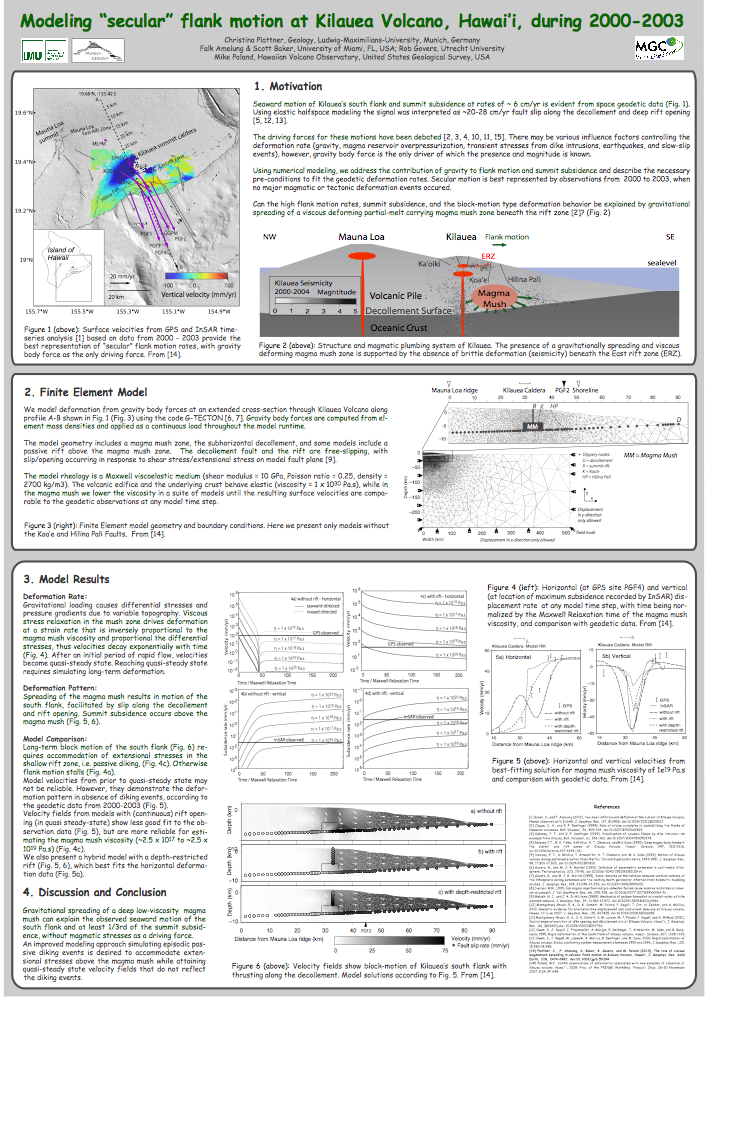Volcanic spreading defines the outward displacement of flanks of a volcano along deep-seated subhorizontal structures beneath the volcanic pile and has been observed worldwide. The cause of these motions is not always well understood. Some volcanoes show higher deformation rates than expected from gravity body force and the role of magmatic stresses has been discussed. In this study we suggest to use Kilauea Volcano, Hawai’i to investigate the dynamics of spreading volcanoes through numerical modeling. In particular the time-dependent evolution of stress and strain fields resulting from various forces potentially causing volcanic flank motions and/or influencing the stress state at the flank (gravity body force, poro-elastic forces, magmatic overpressures, and episodic tectonic and magmatic deformation events causing static stress change and transient stresses) will be simulated. Different assumptions on model parameters such as material properties and fault friction will be tested. To compare model results to observations we will use surface velocity data from time-series of Global Positioning System, Interferometric Satellite Aperture Radar, and ground geodesy will be used. This expected outcome will provide a better understanding of volcanic spreading and the interaction of tectonic and magmatic stresses over long- and short time scales.
This project has been funded by the Deutsche Forschungsgemeinschaft 9/2013. Preliminary results of this project are summarized below. For more information please visit: http://onlinelibrary.wiley.com/doi/10.1002/jgrb.50194/abstract


